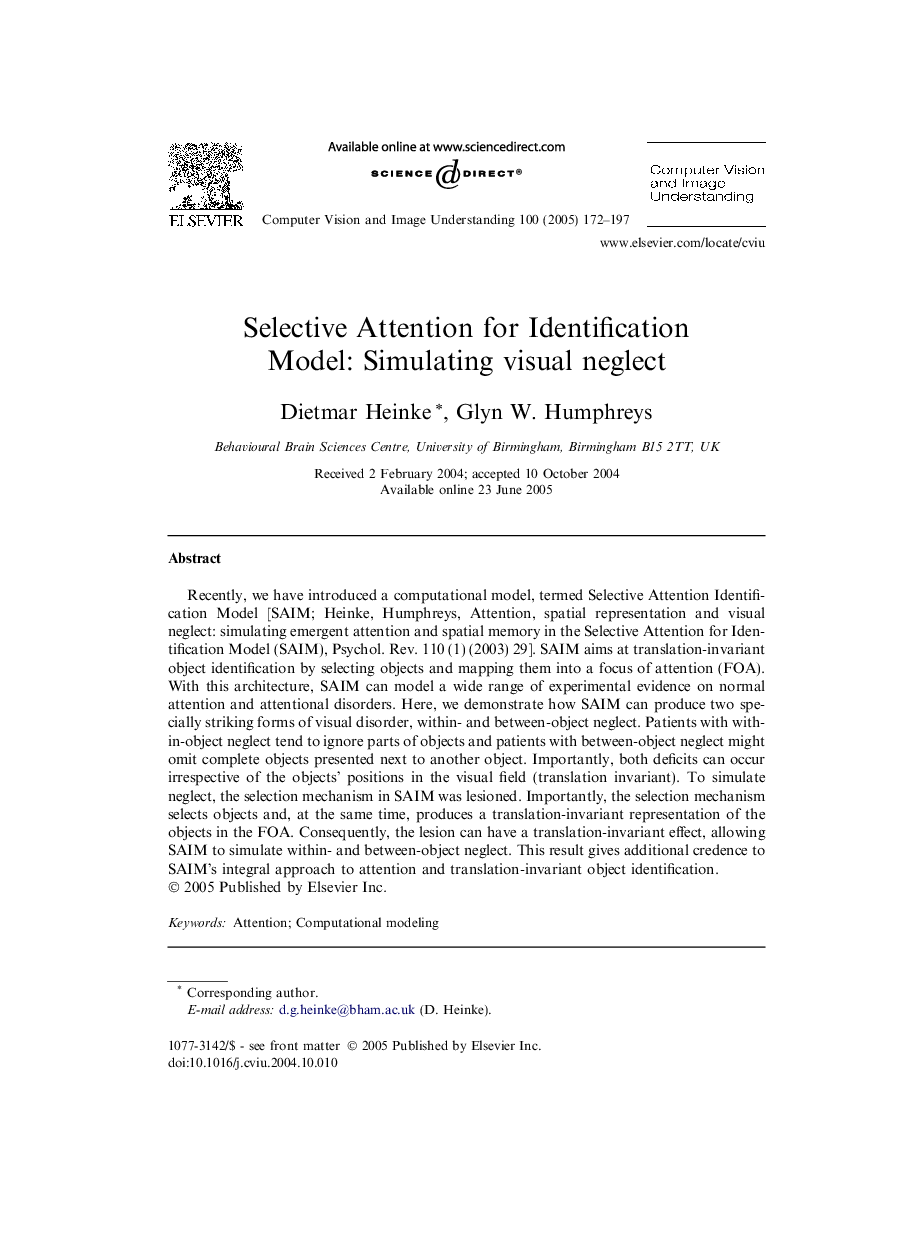| Article ID | Journal | Published Year | Pages | File Type |
|---|---|---|---|---|
| 9669563 | Computer Vision and Image Understanding | 2005 | 26 Pages |
Abstract
Recently, we have introduced a computational model, termed Selective Attention Identification Model [SAIM; Heinke, Humphreys, Attention, spatial representation and visual neglect: simulating emergent attention and spatial memory in the Selective Attention for Identification Model (SAIM), Psychol. Rev. 110 (1) (2003) 29]. SAIM aims at translation-invariant object identification by selecting objects and mapping them into a focus of attention (FOA). With this architecture, SAIM can model a wide range of experimental evidence on normal attention and attentional disorders. Here, we demonstrate how SAIM can produce two specially striking forms of visual disorder, within- and between-object neglect. Patients with within-object neglect tend to ignore parts of objects and patients with between-object neglect might omit complete objects presented next to another object. Importantly, both deficits can occur irrespective of the objects' positions in the visual field (translation invariant). To simulate neglect, the selection mechanism in SAIM was lesioned. Importantly, the selection mechanism selects objects and, at the same time, produces a translation-invariant representation of the objects in the FOA. Consequently, the lesion can have a translation-invariant effect, allowing SAIM to simulate within- and between-object neglect. This result gives additional credence to SAIM's integral approach to attention and translation-invariant object identification.
Keywords
Related Topics
Physical Sciences and Engineering
Computer Science
Computer Vision and Pattern Recognition
Authors
Dietmar Heinke, Glyn W. Humphreys,
